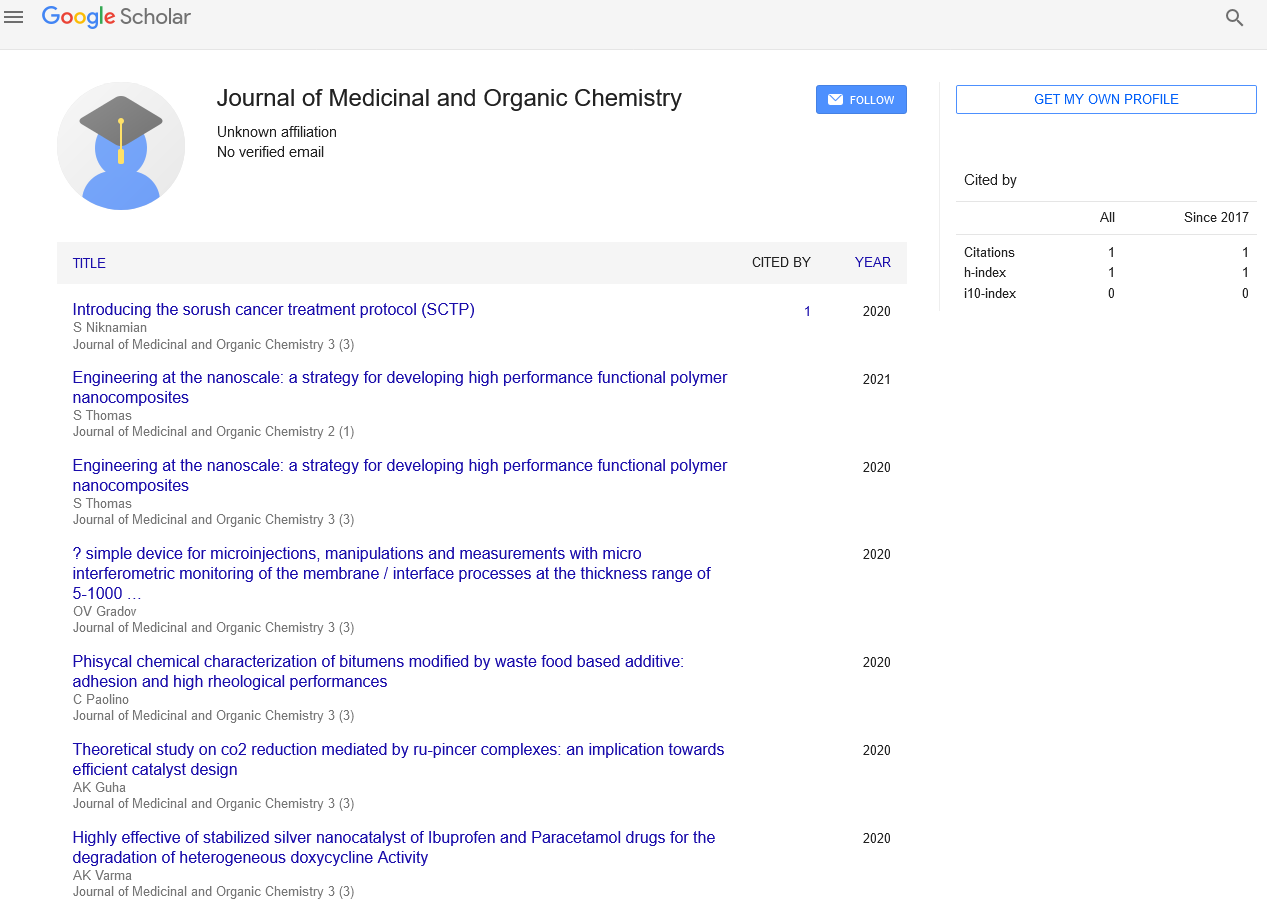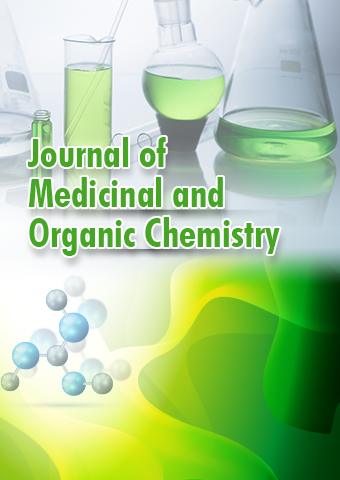Review Article - Journal of Medicinal and Organic Chemistry (2022) Volume 5, Issue 4
Carbapenem Antibiotics Promote Mucus Degradation
Mohamed A Jamal*,
Austria Department of Genomic Medicine, The University of Texas MD Anderson Cancer Centre, Houston, TX
- *Corresponding Author:
- Mohamed A Jamal*
- Austria Department of Genomic Medicine, The University of Texas MD Anderson Cancer Centre, Houston, TX
- E-mail:jamalmd.123@gmailcom
Abstract
Patients undergoing allogeneic hematopoietic stem cell transplantation (allo-HSCT) are at risk for graft-versus-host disease (GVHD). The gastrointestinal tract has been identified to be a primary target of allogeneic donor T cells in allo-HSCT. The intestinal microbiota is known to interact with the host immune system and has been found to be an important modulator of GVHD. Broad-spectrum antibiotics such as carbapenems are often used in allo-HSCT patients to treat infections but have been found to increase the risk for intestinal GVHD, possibly via bystander depletion of beneficial commensal bacteria. However, whether loss of beneficial commensal bacteria is mechanistically sufficient to aggravate intestinal GVHD is not known. To examine this further, we utilized a mouse model of GVHD to study the effects of meropenem, a commonly used carbapenem in allo-HSCT patients.
Keywords
Clostridia • Bacteroides • Organoids
Introduction
Lethally irradiated B6D2F1 (H-2 b/d) mice were intravenously injected with five × ten vi bone marrow cells and five × ten vi splenocytes from major organic phenomenon complexmismatched B6 (H-2 b) or syngeneic donors on day zero microorganism. Meropenem was in addition administered to some allo-HSCT recipient mice within the drink from days three to fifteen once allo-HSCT [1]. We tend to found that meropenem treatment aggravated GVHD primarily within the colon of mice, and 16S ribosomal RNA cistron sequencing analysis incontestable that a lot of microorganism genera were depleted in meropenem-treated mice, together with Blautia and Lachnoclostridium that belong to the category Clostridia [2]. At the same time, the abundance of the genus Bacteroides was multiplied in meropenem-treated mice that we tend to additionally determined in allo-HSCT patients at our establishment following meropenem treatment. Apparently, once meropenem-treated mice were in addition treated orally with decontaminating antibiotics, GVHD severity and survival were ameliorated, suggesting that meropenem might induce worsened GVHD via enlargement of pro-inflammatory microorganism in addition as depletion of useful microorganism.
We explored that species of Bactericide genus was the foremost dilated by meropenem treatment and known Bacteroides thetaiotaomicron (BT) as considerably multiplied species. Intro of BT rehabilitated aggravated GVHD in mice treated with decontaminating antibiotics [3]. BT may be a gram-negative anaerobe with a broad ability to degrade dietary polysaccharides in addition as host glycoprotein glycan. In meropenem-treated allogeneic mice, we tend to determined considerably dilatant colonic mucous secretion, multiplied myeloid-cell infiltration into colonic tissue, and multiplied m translocation into peritoneum humour nodes. Emotion in distinction diode preservation of colonic mucous secretion layer in meropenem treated allogeneic mice. BT, within the presence of multiple appropriate macromolecule substrates, has been found to preferentially consume bound carbohydrates 1st and solely once depleting these can it then up regulate utilization genes targeting alternative on the market polysaccharides. Host glycoprotein glycans area unit notably low on the metabolic hierarchy for BT. RNA sequencing stool samples from meropenem-treated allogeneic mice incontestable that BT unregulated expression of β-galactosidase, sialidase and α-L-fucosidase, all of participate within the degradation of host glycoprotein glycans. Macromolecule mass spectrum analysis identification of colonic sodium thiopental contents showed attenuated levels of polysaccharides comprised of saccharide. Apparently, saccharide supplementation in meropenem-treated allogeneic mice considerably prevented dilution of the colonic mucous secretion layer, indicating that providing an alternate macromolecule supply was decent to suppress mucusdegrading behaviour in B. This, in turn, will result in enlargement and altered behaviour of commensal microorganism like BT to focus on enteral mucous secretion, which might contribute to multiplied severity of GVHD. Specific organic process supplementation ways like providing saccharide is also useful to combat changes to the enteral atmosphere in allo-HSCT patients with antibiotic-mediated micro biome injury.
Description
Graft-versus-host sickness (GVHD) may be a alarming complication once allogeneic stemcell transplantation (ASCT). Previously, we tend to et al. showed that activation of kind I antiviral drug (IFN-I) causation pathways like RIG-I/MAVS or cages-STING will promote the integrity of the enteral barrier and limit[4]. We tend to hypothesized that microbiotaderived merchandise like microbes metabolites have interaction IFN-I sign in immune and non-immune cells poising them for induction of protecting responses. We tend to establish a prospective, multi-centric clinical study in patients new diagnosed with leukaemia and performed longitudinal stool sampling to trace changes in microbe community composition and metabolites expression levels. Submitted as a separate abstract to ASH, we tend to show that patients with high matter expression going into ASCT area unit less seemingly to develop GVHD. During this study, we tend to translate our clinical observations to mouse models of acute GVHD and human and mouse enteral organoids to uncover the molecular mechanisms via that metabolites shield the enteral barrier throughout ASCT. Stool samples from ASCT patients were obtained in Munches and at Regensburg in accordance to IRB-approved study protocols. Patients were sampled at initial identification (Dx), before acquisition and weekly once ASCT up to day twenty eight[5]. We tend to analysed samples by 16S rRNA sequencing and mass spectrum analysis to get a whole image of microbiome composition and performance. Next, we tend to tested metabolites that we tend to detected in patients (desaminotyrosine [DAT], indole-3-carboxaldehyde [ICA]) as treatment in diagnosing models in ASCT and GVHD mouse models. Outcomes were assessed by a unique organoid recovery assay additionally to established read-outs. To get a mechanistic understanding of the sign pathways concerned, we tend to stirred up WT or IFN-I-signaling-impaired mouse in addition as human enteral crypt-derived organoids with metabolites.
We confirmed this trend in our multi-centric cohort of ASCT patients by examination levels of digital audiotape and ICA sampled at admission to the transplantation ward (Conditioning) versus at clinical identification of GVHD: in patients with GVHD, matter levels were drastically reduced. We tend to establish that microbial-derived metabolites detected in patients will have interaction the STING pathway in humans and mice to confer resistance from immune injury. Thus, prophylactic administration of matter cocktails or microorganism consortia which will} turn out these metabolites may cut back prevalence of GVHD in ASCT patients.
Acknowledgement
None
Conflict of Interest
No conflict of interest
References
- Alberti C, Brun-Buisson C, Burchardi H et al. Epidemiology of sepsis and infection in ICU patients from an international multicentre cohort study. Intensive care medicine. 28(2), 108–121 (2002).
- Vincent JL, Sakr Y, Sprung CL et al. Sepsis in European intensive care units: results of the SOAP study. Critical care medicine. 34(2), 344–353 (2006).
- Nguyen HL, Saito R, Ngiem HK et al. Epidemiology of influenza in Hanoi, Vietnam, from 2001 to 2003. The Journal of infection. 55(1), 58–63 (2007).
- Dat VQ, Toan PK, Van Doorn HR et al. Purchase and use of antimicrobials in the hospital sector of Vietnam, a lower middle-income country with an emerging pharmaceuticals market. Plo On.15 (10), 345-365 (2015).
- Thu TA, Rahman M, Coffin S et al. Antibiotic use in Vietnamese hospitals: a multicentre point-prevalence study. Amer. Jou Inf Con. 40 (9), 840–848 (2012).
Indexed at, Google Scholar , Crossref
Indexed at, Google Scholar , Crossref
Indexed at, Google Scholar , Crossref
Indexed at, Google Scholar , Crossref

